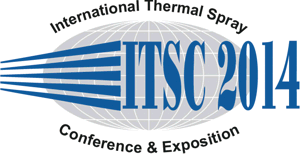
|
3736 |
|
Improvements on MMC coatings: Influence of the powder preparation (mixture or ball milling) and the powder size on the coating behaviors |
|
Sophie Costil* / IRTES-LERMPS / UTBM, France Tiphaine Baur/ IRTES-LERMPS, UTBM, , France Omar El Kedim/ FEMTO ST, UMR 6174 CNRS, UTBM, Site de Sévenans, , France Anne-Françoise Bonnot/ AREVA NP, 10 rue J. Récamier , France Ghislain Montavon/ IRTES-LERMPS, UTBM,, France Delphine Aussavy/ IRTES-LERMPS, UTBM, FRANCE |
|
Metal Matrix Composites (MMC) are composed of hard particles which exhibits exceptional wear resistance. In this respect, many investigations were conducted to improve the life duration of structures. Regarding surface sollicitations, thermal spraying can be selected to elaborate thick composite coatings with specific behaviours. In order to improve coating mechanical properties, it is necessary to manufacture samples with more homogeneous microstructures. To reach this objective, the chosen approach was to optimize the powder morphology by mechanical alloying. Indeed, when mechanical alloying process is employed to synthesize composite powders strengthened by particle dispersion, powders tend to fracture into small segments, especially when high content of hard particles is added. Powder microstructures are then refined which induces thinner coating morphologies and reduced their porosity content. In the present work, the mechanical alloying (ball milling) method was developed to synthesize NiCrBSi-WC composite powders to be sprayed by HVOF. Considering different granular sizes of powders (micrometric and nanometric) and after optimising the process parameters, composite coatings were compared with the standard coatings elaborated from mixed powders. SEM observations, hardness measurements, DRX analysis were the first technologies implemented to characterize the Metal Matrix Composite coatings. |